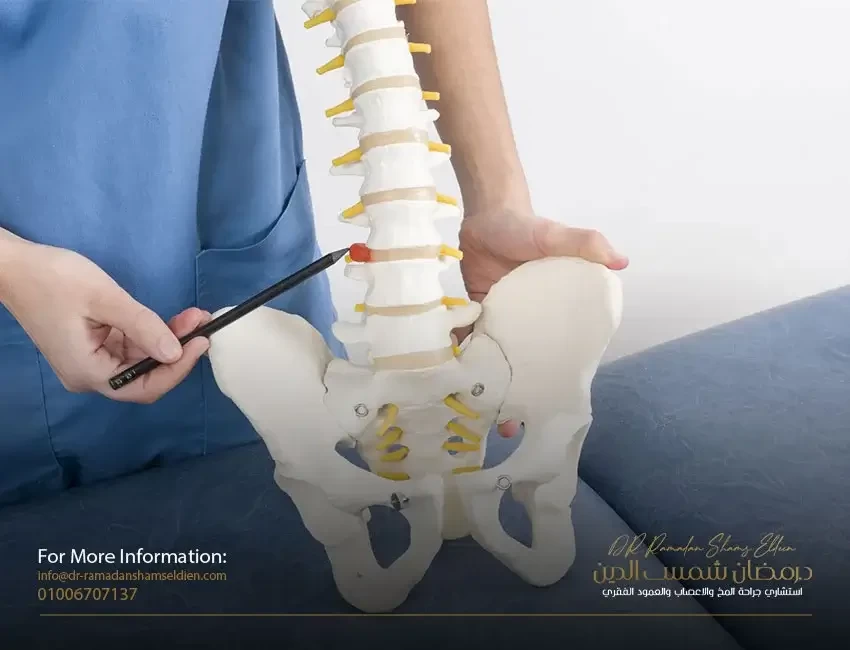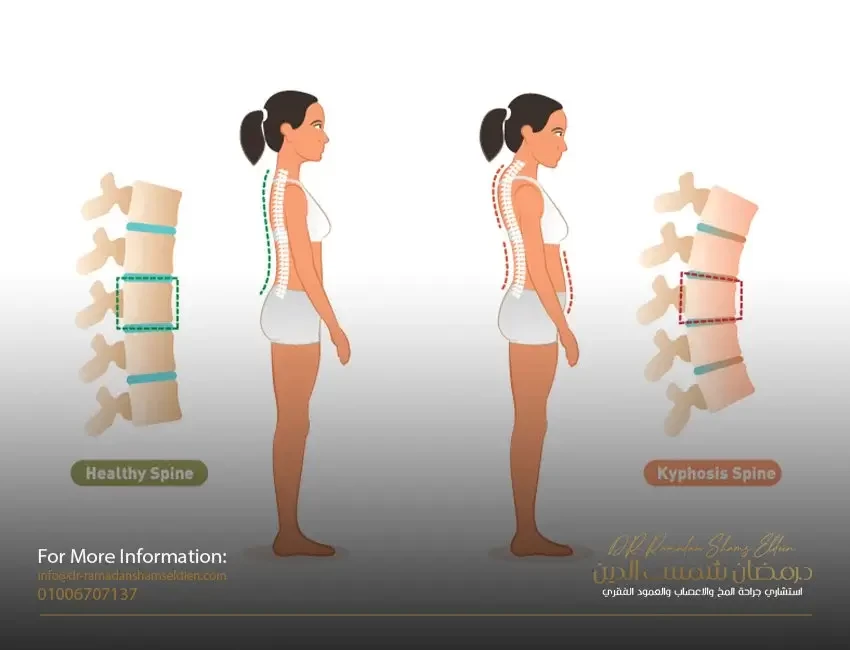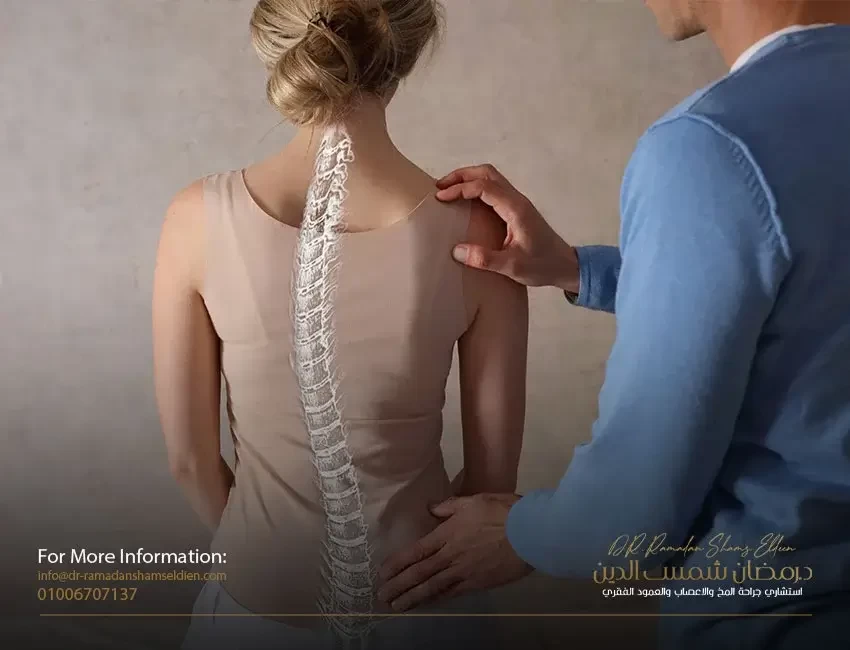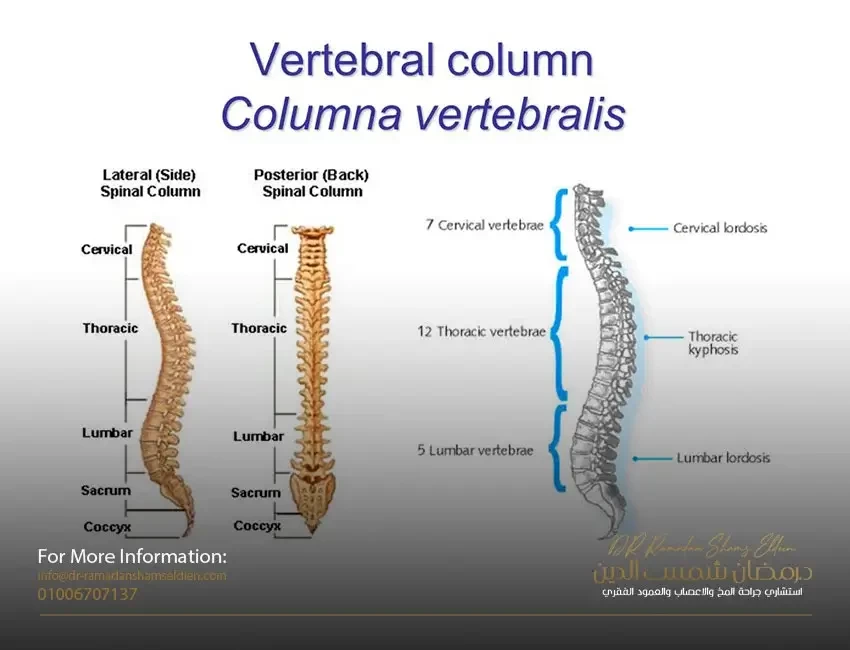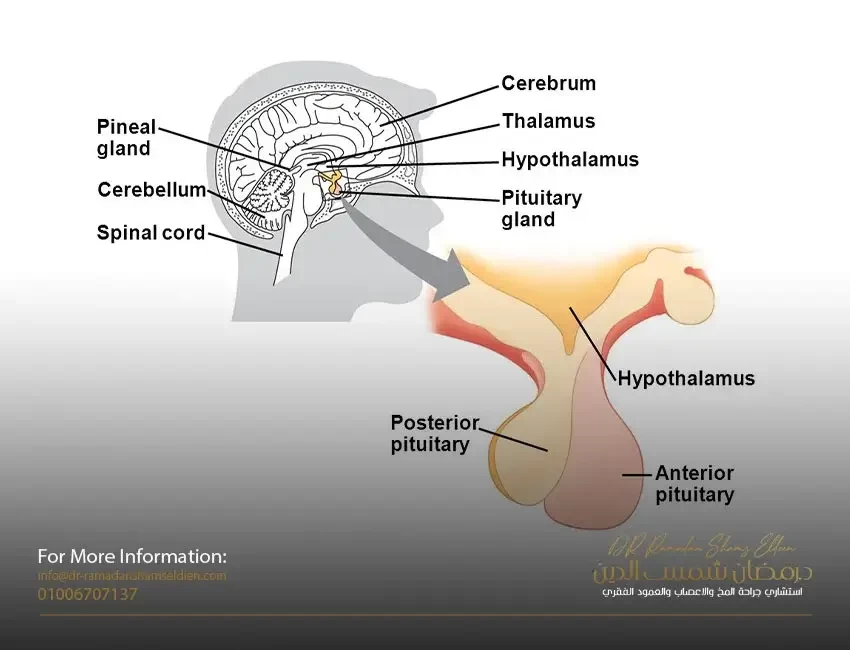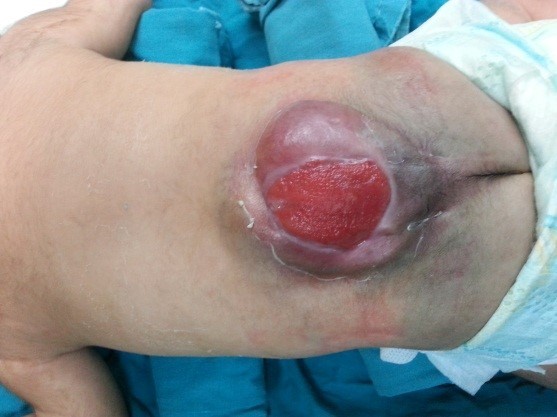What is the best practical definition of a lumbar disc or herniated disc with nerve root involvement?
Local displacement of disc material or cartilage outside the normal margins or boundaries of the intervertebral disc space, resulting in pain, weakness, or numbness in the muscular or skin distribution of the compressed nerve root.
What is the natural history of a lumbar disc herniation or slipped disc with the impact of the roots?
Lumbar disc herniation will often improve regardless of the treatment method used. Unless there is neuropathy caused by direct pressure on the nerve sac and the nerve root, things will be fine over time.
What is the negative impact of a lumbar disc herniation?
The effect of lumbar disc herniation depends on the degree of slippage, as well as on the location of the displaced disc in relation to the main nerve sac and to the nerve outlet. Thus, the patient’s complaints range from mere lower back pain accompanied by pain in the lower extremities or one of them, and the complaint increases in some cases to weakness in the muscles of the foot, leg or pelvis with the inability to fully control the output.
What are the available treatment methods for lumbar disc herniation?
First: Conservative drug treatment with complete rest. The rest period extends for three weeks. The period of drug treatment extends from six to eight weeks. Taking into account the response to the treatment regimen and the lack of deterioration of the condition, which leads to a change in the treatment method followed by another method (such as surgical intervention).
Thermal frequency needle local injection
Second: physical therapy with drug therapy. Third: local injection Fourth: thermal frequency
Fifth: Surgical intervention, and surgical intervention has many types, such as the usual intervention, microscopic, endoscopy, limited intervention, vertebra stabilization, and the installation of frontal supports.
Of course, what will determine the method and quality of treatment is the patient's condition in general and the nervous condition resulting from slipping in particular.
What are the instructions to be followed for the usual medications from the patient before surgery?
• Before proceeding to the surgery, any non-steroidal anti-inflammatory drugs such as: Ibuprofen, Naprosyn, Celebrex, Mobic, Indoside and Diclofen should be discontinued. 7 days before surgery.
• You will also need to stop taking aspirin and any anticoagulants (helping with fluidity), including clopidogrel and marivan (7 to 10) days before the date of the intervention.
• Please stop taking herbal and vitamin supplements for the same period (7-10) days before surgery including but not limited to, ginseng, ginkgo biloba, vitamin E and vitamin C.
• Diabetics should not take any oral hypoglycemic drugs and switch to insulin instead of tablets 5 to 3 days before the surgical procedure.
• You should not take any diuretics on the morning of the surgery (eg Lasix) unless the patient has congestive heart failure.
• You should not take any of the classes of antihypertensive drugs, which include the following examples: Lisinopril, Lotril, Captopril, Lutensin, Monopril, Brinzide, Atacand, Benicar, Diovan and Avalid.
Duration of rest from work after surgical intervention:
Recovery after surgery varies according to your health condition before it and also according to your general fitness and physical efficiency in general before the surgical intervention, and this actually varies from person to person and is affected by many factors, such as age, smoking and chronic diseases accompanying the patient.
Therefore, the period of rest from work after the surgical intervention varies from one person to another, but it is usually not less than six or eight weeks, and not more than twelve to eighteen weeks. It is taken into account the necessity of a gradual return to work over a period of a few weeks after the completion of the rest period, so that during this period the patient avoids riding or driving a car at peak hours, standing for long periods, sitting for long periods or carrying anything heavy.
As for the owners of manual professions, they must also have a safe, gradual return to work, taking into account the previous advice. In addition, it is emphasized not to excessive manual activities and repeated payment, pulling and winding for weeks after the resumption of work.
When can I resume regular exercise?
It is recommended to rest completely in the first weeks after surgery and start exercising gradually from the fourth week on an individual basis or if necessary under the supervision of a physiotherapist.
When can I travel by plane after surgery? Although you can travel immediately after surgery, it is better after surgery for short trips to travel after at least six weeks, and for long trips, at least twelve weeks must pass. This is to avoid:
• First, the risk of developing deep venous thrombosis and the resulting risk of pulmonary arrest,
• Second, reducing lower back pain, which is the worst symptom to occur after sitting for a long time early after lumbar cartilage surgery.
In general, when allowed to travel by plane, whenever possible, it is advised to have additional legroom during travel and to change the position from sitting to walking every 20 minutes.
How to ride a car and when you can drive safely:
It is recommended to push the seat back as far as possible and maintain the straight position of the lumbar vertebrae without any curvature or curvature while you are in the car during your journey. It is preferable to lower the driving seat if possible to the lowest level while driving while maintaining the position of the vertebrae straight.
Whenever possible it is recommended, avoid sitting in the car for more than 20-30 minutes in the first 6 weeks after checking on the integrity of the wound and this is considered approximately two weeks after surgery. After two months of surgery and all is well, you can travel by car, but whenever possible,
It is recommended to break up long trips with frequent stops (every 30 minutes or 45 minutes), so that you walk for a few minutes before continuing the trip. It is also recommended to gradually drive so that we stay away from peak times and places of congestion so that we can dismantle the trip and make it easier to stop at any time.
When can I do my home activities after the surgery?
Walking
It is important to keep yourself moving and fit. You will be able to walk a distance without getting tired and it varies from person to person. Walking will not hurt the spine, as long as you keep walking in a balanced and moderate manner without twisting or bending the body. It is recommended to gradually increase the time and speed of walking after the period of complete rest after surgery (the first three weeks). It is always best to maintain a comfortable level of activity, meaning not to walk until the patient feels tired.
flexing
Bend your hips and knees, not your back.
lift
Do not lift heavy objects and always bend your knees/hips to pick up objects. When lifting, tighten your abdominal muscles before lifting. Lift what you can carry quietly without muscle fatigue, and ask others for help in carrying any weight that may strain the lumbar muscles.. Reduce the load whenever possible to several smaller loads. Whenever you are carrying anything, keep it close to your body.


